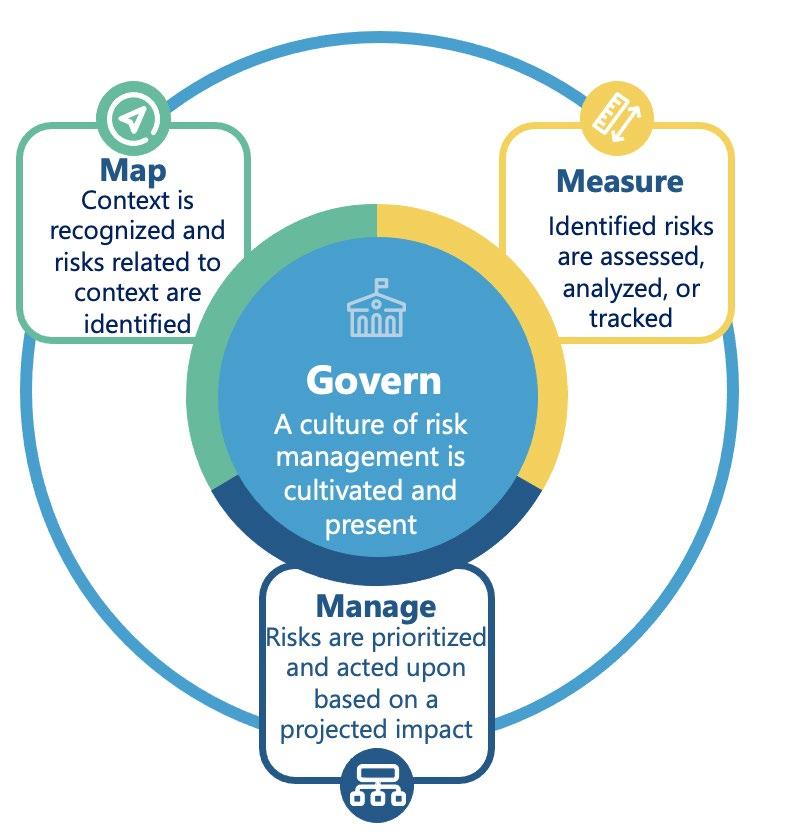
2 minute read
APPENDIX B: HOW AI RISKS DIFFER FROM TRADITIONAL SOFTWARE RISKS
Appendix B: How AI Risks Differ from Traditional
Software Risks
Advertisement
As with traditional software, risks from AI-based technology can be bigger than an enterprise, span organizations, and can lead to societal impacts. AI systems also bring a set of risks that are not comprehensively addressed by current risk frameworks and approaches. Some AI systems’ features that present risks can also be beneficial. For example, pre-trained models and transfer learning can advance research and increase accuracy and resilience when compared to other models and approaches. Identifying contextual factors in the Map function will assist AI actors in determining the level of risk and potential management efforts. Compared to traditional software, AI-specific risks that are new or increased include: » “Oracle problem” - the data used for building an AI system is considered oracle, but data may not be a true or appropriate representation of the context or intended use of the AI system.
Additionally, bias and other data quality issues can affect AI system trustworthiness, which could lead to negative impacts. » AI system dependency and reliance on data for training tasks, combined with increased volume and complexity typically associated with such data. » Intentional or unintentional changes during training that may fundamentally alter AI system performance. » Datasets used to train AI systems may become detached from their original and intended context, or may become stale or outdated relative to deployment context. » AI system scale and complexity (many systems contain billions or even trillions of decision points) housed within more traditional software applications. » Use of pre-trained models that can advance research and improve performance can also increase levels of statistical uncertainty and cause issues with bias management, scientific validity, and reproducibility. » Higher degree of difficulty in predicting failure modes for emergent properties of large-scale pre-trained models. » Increased opacity and concerns about reproducibility. » Underdeveloped software testing standards. » Computational costs for developing AI systems and their impact on the environment and planet.
Current standard privacy and security controls are not able to comprehensively address many of these AI system risks. Existing privacy, computer security, and data security frameworks and guidance are unable to: » adequately manage the problem of bias in AI systems; » comprehensively address security concerns related to evasion, model extraction, membership inference, or other machine learning attacks;
» address the complex attack surface of AI systems or other security abuses enabled by AI systems; and » address risks associated with third-party AI technologies, transfer learning, and off-label use, where AI systems may be trained for decision-making outside an organization’s security controls or trained in one domain and then “fine-tuned” for another.
Perceptions about AI system capabilities can be another source of risk. One major false perception is the presumption that AI systems work – and work well – in all settings. Whether accurate or not, AI is often portrayed in public discourse as more objective than humans, and with greater capabilities than general software. Additionally, since systemic biases can be encoded in AI system training data and individual and group decision making across the AI lifecycle, many of the negative system impacts can be concentrated on historically excluded groups.





